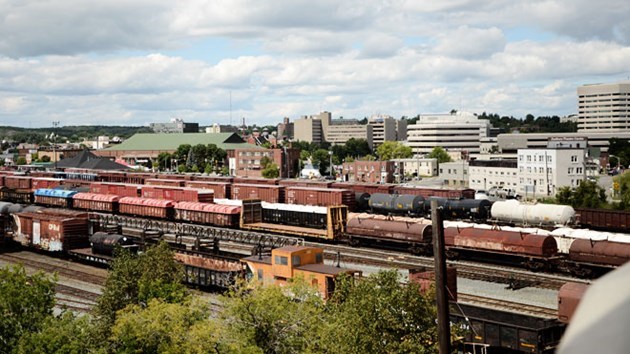Following complaints from residents, the city's emergency services committee will get an overview next week on the rules governing how long trains can hold up traffic.
The report follows a motion passed in November from Ward 7 Coun. Mike Jakubo that called for a limit of 12 minutes for trains to clear public crossings.
"There's not a councillor at this table that isn't impacted by rail crossing,” he said.
What prompted his motion was the fact that in Capreol, trains have blocked roads for as long as 30 to 40 minutes. And Capreol residents who attended a town hall hosted by Nickel Belt MP Marc Serré in October raised concerns about the unusually long delays causing public safety concerns at the Young Street rail crossing.
A letter sent to CN Rail asking them to limit the length of time trains take to pass has not resulted in major changes, Jakubo said. Currently, there are no restrictions on how long trains can take, provided they don't stop completely.
The city met with CN representatives last November, and while they didn't agree to the 15-minute limit for moving trains, they did establish a protocol for handling emergency vehicles that could be obstructed by the trains.
The report headed to the committee says that rail companies are governed by federal law, specifically the Canadian Rail Operating Rules. Section 103 (d) of the rule states that when trains are standing or switching operations at a public crossing, the train “must not obstruct vehicular or pedestrian traffic for a longer period than five minutes at a time. When emergency vehicles require passage, employees must co-operate to quickly clear the involved crossings.”
During the November meeting, crossings in Greater Sudbury were identified as having potential impact to emergency services response times.
“As such, these identified crossings have been flagged by our dispatch centres (Ministry of Health and Long Term Care (MOHLTC) – Central Ambulance Communications Centre and Greater Sudbury Police Services 9-1-1 Communications Centre) to allow for more efficient response in the event there is a delay due to a blocked rail crossing,” the report says.
“The group has developed a notification protocol that directs the dispatch centres to contact CN Rail Traffic Control when a request for service is received in the identified areas. Notifying the rail company is to prevent a delay in response to the emergency call.
If an emergency vehicle arrives at the crossing and a train is obstructing the route, EMS will notify the dispatch centre and advise if the train is moving or is stopped. In most cases if the train is moving, it is more advantageous for first responders to remain at the crossing and wait for the train to clear, the report says.
"On Dec. 14, an unannounced test was conducted,” the report says.
“All partners responded well and the operating procedure worked as intended. All stakeholders are committed to ongoing education, training and routine testing to ensure staff is familiar with the established operating procedures.”
